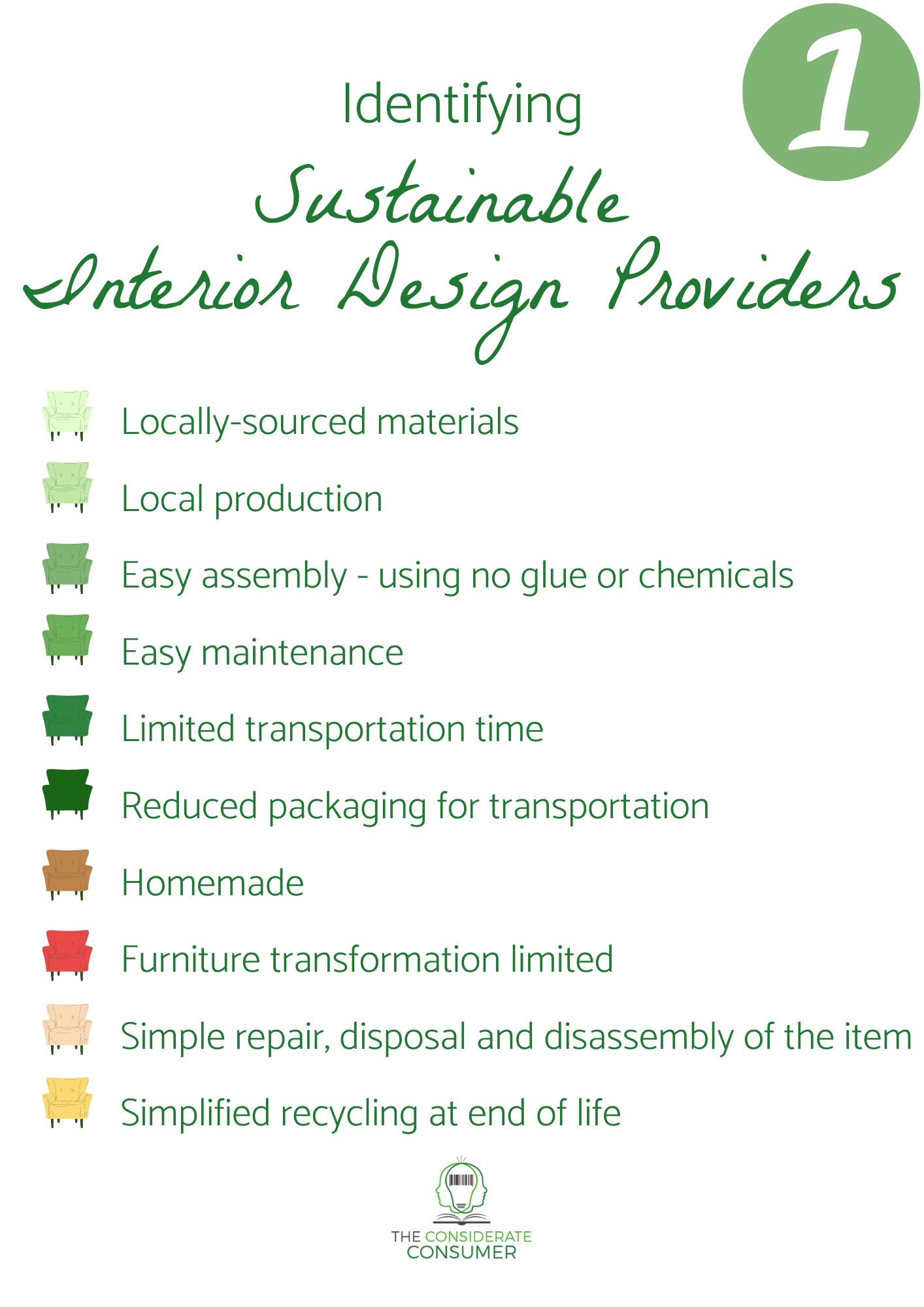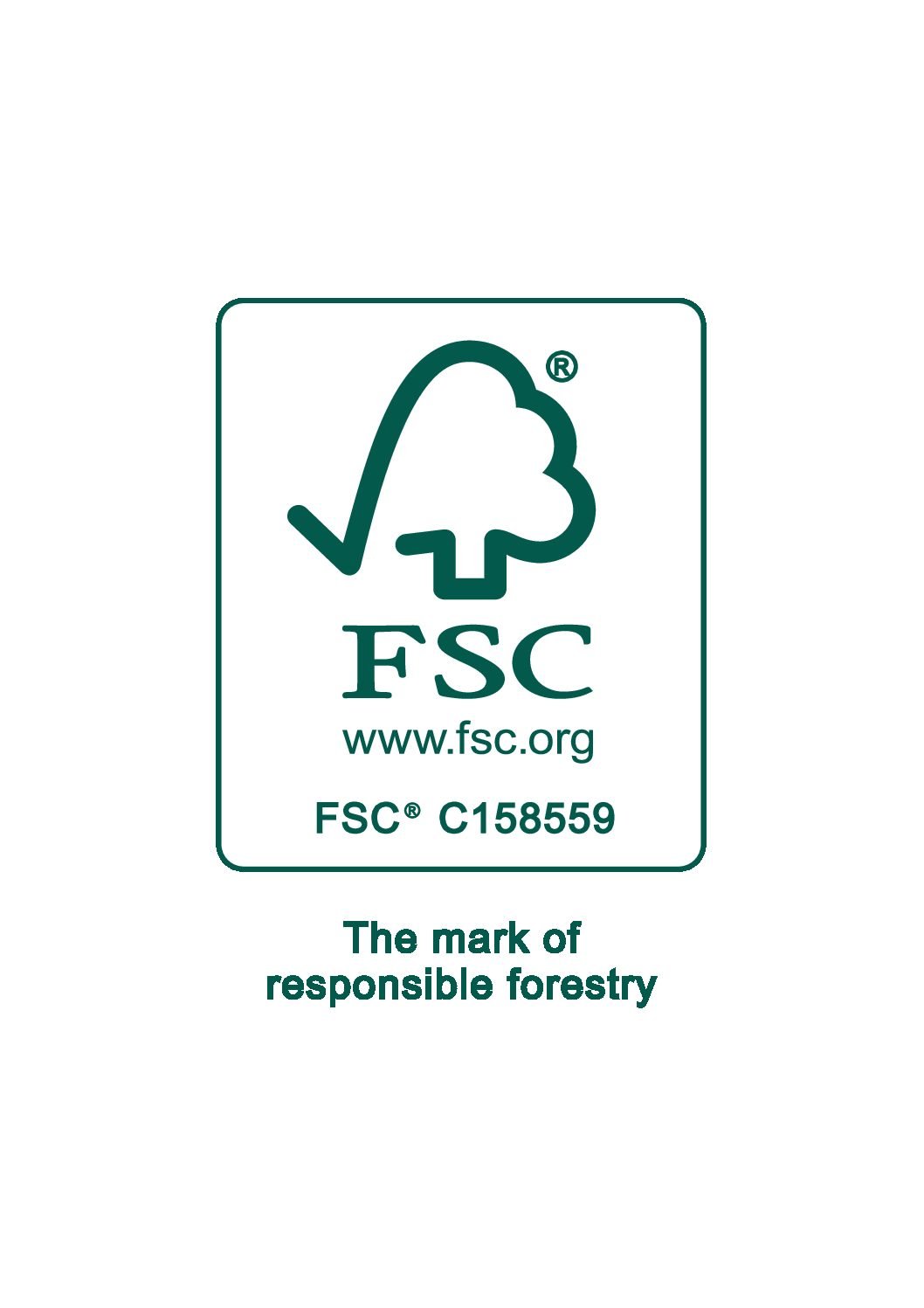May 2022
We want to take care of our planet, as well as keep our homes stylish, warm and our own. It can be daunting and overwhelming to know where to start when shopping for more sustainable items for your home. Here, we have gathered various options and points of consideration you can begin with.
Checklist: Interior Shopping Pre-Considerations
Before making any new purchases, ask yourself these questions that you find in the visual.
Once you have asked yourself these questions and still have decided to purchase new interior pieces, there are a few ‘golden rules’ to opt for to stay well informed and make a sustainable purchase. Continue reading to learn about the rules of thumb.
Shopping Locally
Shopping locally not only supports local business, and in turn gives back to your community; it also reduces your carbon footprint. Popping to your local high street to shop for interior items reduces air pollution and traffic as less driving is needed. Similarly to upcycled or second-hand items, shopping locally usually means you will find one-of-a-kind pieces that have not been made in mass production. This also means fewer carbon emissions have been produced.
Second-Hand & Charity Shops
As the world becomes more accessible through technology, so does making purchases. While more and more clothing is being purchased, every year but 84% of clothes and 80-90% of furniture are ending up in landfills. Not only do second-hand shops stop this from happening, but they also support charities, make purchasing of items more accessible and allow items to be rehomed. Whether it be purchasing or rehoming items, you cannot go wrong with second-hand. It is estimated that ‘thrifting’ has increased by 69% over the past 3 years! As a plus, reclaimed furniture gives character and tells a story.
For more inspiration, please visit the below websites for second-hand stores specialising in interior design and furniture for your inspiration.
British Heart Foundation
Flea Markets can be found in a lot of cities around the world - Bilbao, Berlin, Vienna, Helsinki, Massachusetts, California, Ohio, Perth or search using Fleamapket.
There are many independent second-hand sellers on Etsy and Instagram - try searching #secondhandfurniture. Not only are you shopping second-hand, but you are also supporting small businesses, a win-win!
eBay is always a great place to start if you are unsure about shopping for sustainable interiors in person.
Another great online find is Facebook Marketplace.
Opt for Repurposed Items
It’s important to not limit yourself when looking for a sustainable interior. Your new piece of reclaimed furniture could be from an office, gym, restaurant or a ship. Although these pieces take more time and perseverance, you can end up with a conversation-starter unique piece!
Avoid Fast-Changing Trends
It's so easy, exciting and aesthetically pleasing to fall into trends. However, this can be very financially and environmentally demanding. Trends come and go. When we take a look back through interior design throughout the years,
1960s - designers experimented with plastics and bright colours,
1970s were all about prints, patterns and shapes. The more vibrant the better!
1980s were inspired by preppy styles,
1990s by less extravagant, more natural styles.
2000s interior became more futuristic with modern pieces for the new decade.
Over the past couple of years, the interior has become a lot more elegant, with greys, marble print and natural colours becoming very popular. With trends changing so much each year, it is vitally important to purchase cleverly, timeless pieces that will last.
Pick up Rather Than Deliver
Some argue that with online shopping, the amount of emissions released by customers driving to the store is decreased. However, research suggests otherwise. The e-commerce industry is producing more greenhouse gases (GHG) than customers collecting their items from stores. Whilst deliveries can be more convenient, picking up items from the store is most likely to decrease GHG footprints (Shahmohammadi et al., 2020).
If however travelling to stores isn’t a suitable option for you, ordering from a local store can reduce carbon emissions as people buying from local, smaller stores are more likely to purchase more items and less distance is required to travel (Temming, 2020).
Last but not least, it is important to do your research when making any changes to your interior as what works for one person may not work for you. Browse the web to find further inspiration.
Sustainable interior design providers
A sustainable approach to interior design begins at the start of the supply chain. This includes the sourcing of materials, manufacturing, transportation and people involved. Designs, materials and resources that are more durable, higher quality and renewable begin the sustainability processes of the interior. This is all part of a responsible and considerate approach to sustainability. But how to find the providers, brands and companies that follow this?
To gain inspiration or just look around, please follow the links below for eco-friendly retailers that sell sustainable interior design.
UK - collective-stories.com; nkuku.com
Germany - karuun.com/en/; huelsta.com/en
France - maronbouillie.com/shop/en/
The Netherlands - devorm.nl/products
USA - westelm.co.uk/
Australia - purenestinteriors.com.au/
For more products and where to shop sustainably, you can search on Blue Angel.
Checklist - What Can I Look out for When Identifying Sustainable Interior Design Providers?
As we look toward a brighter future, governments and independent agencies have and are in the process of creating guidelines for safer and sustainable practices for the manufacturing of furniture processes. There is also an increasing demand for brands to be more accountable and transparent about where they are sourcing their materials from, and how they are made.
Selecting sustainable materials
When shopping for interiors, it is important to select sustainable materials. The use of natural materials can be hard to determine - most of the time we are faced with a long list of every material used, which can become very overwhelming.
In addition, no item can be deemed a 100% sustainable fabric. We have to consider how the item is sourced, transportation of the item and how well it keeps, and many other factors.
However, try keeping an eye out for certain materials and labels. Look out for materials that meet the below criteria. If an item meets at least half of the below criteria this means it has a low environmental impact:
SustainYourStyle, n.d.
Recycled fabrics - cotton, nylon, polyester, wool and textiles. These alternatives use fabrics that would usually end up in landfills and instead produce them in a much more sustainable way, saving on water, energy and fossil fuels.
Wood – When opting for wood, make a conscious choice to choose the most sustainable options when you can. Fast-growing species such as pine trees are more sustainable than for instance oak trees. Oak can be sustainable but forests have to be managed carefully and well maintained in order to be considered sustainable. Another thing to consider is wood sourced internationally. Not only is transportation more likely to damage the environment due to GHG emissions, but the sustainable guarantee also lessens. Always look out for official certifications. FSC certification ensures the wood is responsible, ethical and sustainable. Options for FSC are definitely not in short supply. The EU has implemented legal measures to protect woodlands and now more trees are planted than cutting down.
Felt – 100% biodegradable and can be used to make curtains.
Organic cotton – Organic cotton is becoming a lot more popular in the fashion industry, with its softness to regular cotton but not the damaging environmental effect. It does not have a long production, uses less energy and decreases greenhouse emissions. Instead, organic cotton uses up to 71% less water than original cotton methods.
Silk - A renewable resource that is biodegradable. If you have the choice, opt for organic silk as original silk uses chemicals in its production.
Natural stone – Is often used in the kitchen or bathroom. Not only is it easy to maintain and durable, but it is also found naturally and requires little energy to manufacture.
Labels & Certifications
Various local and international labels and certifications certify sustainable furniture to help people make eco-friendly choices when shopping for their homes. Eco-labels allow quick, identifiable ways for people to choose their interior items wisely and sustainably. Some of the well-known ones are:
To get a comprehensive overview of furniture eco-labels, check out the Eco-label Index guide or the Certifications & Labels Guide by Ecomedes.
Ecomedes, 2021
Checklist of Materials to Avoid
Of course, whilst there are materials you should look out for, there are others you should avoid. Therefore, look out for the below when considering materials:
VOC (volatile organic compounds)
EPA
Polyester
Conventional cotton
Leather
Bamboo
Synthetic fibres - Acrylic, polyamide, nylon, polypropylene, PVC, spandex (AKA lycra or elastane), aramid, etc.
MDF and Plywood - MDF stands for medium-density fibreboard.
Down - the layer of fine feathers in birds and used in pillows and duvets.
Wood (non-FSC-certified)
Materials to avoid (SustainYourStyle, n.d.)
Learn more
The Basics: Sustainable Interior → Why? What? Where to start?
Sustainably Maintaining & Disposing of Interior Items →
Sustainable Consumption →
Check our sources: Bibliography →










